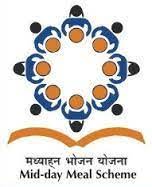CURRENT AFFAIRS
Get the most updated and recent current affair content on Padhaikaro.com
Midday meal and supplements
- IAS NEXT, Lucknow
- 14, Apr 2022

Reference News:-
From the next academic session, Karnataka is likely to become the 13th state to provide eggs under the midday meal scheme.
- The proposal comes on the back of successive surveys pointing out high prevalence of malnutrition, anemia and low immunity among children in many parts of the
- The National Family Health Survey-V found 35% children under five stunted, and around 20% wasted.
PM Poshan/midday meal scheme:
- Midday meal scheme was renamed PM Poshan Shakti Nirman or PM Poshan in 2021.
- It was launched on August 15 1995 as a centrally sponsored scheme.
- Coverage: Initially, it was launched for students up to Class 5. In 2007, the UPA government expanded it to Class 8.
- The Scheme comes under the Ministry of HRD.
History:
- The first initiative to provide meals to children had been taken by the erstwhile Madras Municipal Corporation around 1920.
- In post-Independence India, Tamil Nadu was again the pioneer, with Chief Minister K Kamaraj rolling out a school feeding scheme in 1956.
- Kerala had a school lunch scheme run by a humanitarian agency from 1961.
- The state government officially took over the initiative on December 1, 1984, making Kerala the second state in the country to have a school lunch programme.
What is the scale of the scheme today?
- The scheme covers 11.80 crore children across Classes 1 to 8 (age group 6 to 14) in11.20 lakh government and government-aided schools and those run by local bodies.
- In the Budget for 2022-23, the Centre has earmarked Rs 10,233 crore for the scheme, while the states are expected to spend Rs 6,277 crore.
Legal rights:
- It is guaranteed under the provisions of the National Food Security Act, 2013 (NFSA).
- It is also based on the Supreme Court’s ruling in People’s Union of Civil Liberties vs Union of India and Others (2001).
Calories requirements:
- For children in primary grades: at least 450 calories and 12 gm protein.
- For upper primary children, the requirements are 700 calories and 20 gm protein.
Implementation:
Under the rules, the allocation of Rs 4.97 per child per day (primary classes) and Rs 7.45 (upper primary) are shared in 60:40 ratio with states and UTs with a legislature, and 90:10 with the Northeastern states, Jammu and Kashmir, Himachal Pradesh and Uttarakhand, while the Centre bears 100% of the costs in UTs without legislature.
- But the states and UTs that supplement the meals with additional items such as milk and eggs contribute more.
- Components such as payments to cooks and workers are also split in the same ratio between the Centre and states.